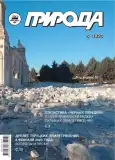Poetry between Myth and Logos: a Decisive Step towards Science
- Autores: Donskikh O.A1,2
-
Afiliações:
- Novosibirsk State University of Economics and Management
- Novosibirsk State University
- Edição: Nº 5 (2023)
- Páginas: 39-47
- Seção: Articles
- URL: https://journals.eco-vector.com/0032-874X/article/view/627801
- DOI: https://doi.org/10.7868/S0032874X23050058
- ID: 627801
Citar
Texto integral
Resumo
Two intellectual traditions, the Indian and the Greek, are used as a basis to discuss the emergence of science in the so-called “axial time” (800–200 BCE) and the role of poetry in the formation of scientifi c thought. At that time, spiritual culture existed as an oral tradition, and the spoken word played a leading role. For several centuries, poets organized and preserved the sacred texts of the Rigveda. They created special ways of pronunciation in order to not distort the sound of hymns, wrote down comments concerning unclear phrases and words, composed dictionaries, and formulated rules of grammar. All these activities resulted in the development of the Vedangas: religious and scientifi c texts, representing, in particular, such disciplines as phonetics, etymology, grammar, and astronomy. To some extent, a similar process can be seen in the Greek tradition. Poets formed a creative attitude to tests and created neologisms, which was an example and a prerequisite for the creation of a number of concepts by philosophers. They also deepened the content of a number of key concepts, such as “measure”, “justice”, etc., began to criticize the mythological tradition, releasing ideas from rigid authorities, and discovered reasoning in the form of proportions. Thus, poetry played a crucial role in the transition from mythological to rational thinking.
Palavras-chave
Sobre autores
O. Donskikh
Novosibirsk State University of Economics and Management; Novosibirsk State University
Email: oleg.donskikh@gmail.com
Novosibirsk, Russia; Novosibirsk, Russia
Bibliografia
- Франкфорт Г., Уилсон Дж., Якобсон Т. В преддверии философии. М., 1984.
- Лотман Ю.М. Анализ поэтического текста. Структура стиха. Л., 1972.
- Елизаренкова Т.Я. «Ригведа» — великое начало индийской литературы и культуры. Ригведа. Мандалы I–IV. М., 1989.
- Соссюр Ф. де. Труды по языкознанию. М., 1977.
- Волошина О.А. Сакральный текст в ритуальном дискурсе (к истокам лингвистического анализа в древнеиндийских трактатах веданги. Известия РАН. Серия литературы и языка, 2018; 77(6): 5–21. doi: 10.31857/S241377150003058-6.
- Волошина О.А. Nighantu как инструмент семантического анализа гимнов Ригведы. Проблемы ближней и дальней реконструкции. Материалы IX Международной научной конференции по сравнительно-историческому языкознанию, посвященной 90-летию со дня рождения профессора Олега Сергеевича Широкова (1927–1997). М., 2017; 191–208.
- A Concise History of Science in India. New Delhi, 1971.
- Аристотель. Метафизика. Сочинения в четырех томах. Т.1. М., 1976.
- Топоров В.Н. Пиндар и Ригведа. Гимны Пиндара и ведийские гимны как основа реконструкции индоевропейской гимновой традиции. Труды Института восточных культур и античности. Выпуск XLIV. М., 2012.
- Cornford F.M. From Religion to Philosophy. A Study in the Origins of Western Speculation. New York; London, 1912.
- Фрагменты ранних греческих философов. Ч.1. От эпических теокосмогоний до возникновения атомистики. М., 1989.
- Snell B. The Discovery of the Mind. The Greek Origins of European Thought. Cambridge, 1953.
- Аристоксен. Элементы гармоники (фрагмент). От Гвидо до Кейджа. Полифонические чтения. М., 2006.
- Фрагменты ранних стоиков. Т.II. Хрисипп из Сол. Пер. А.А.Столярова. Ч.2. М., 2002.
- Blum R. Kallimachos. The Alexandrian Library and the Origins of Bibliography. Madison, 1991.
Arquivos suplementares











